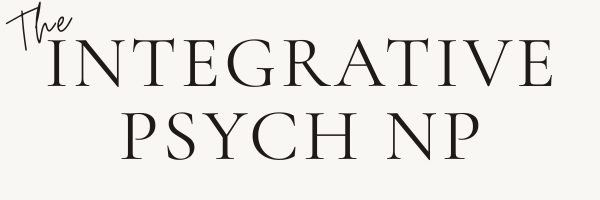A Quick Start Guide to the HPA Axis: What Every PMHNP Needs to Know
A foundational understanding of stress physiology can deepen your psychiatric practice.
Most of us heard about the HPA axis during training. It probably showed up in a pathophysiology lecture, maybe mentioned again in relation to cortisol or adrenal function. But for many, it stayed theoretical and not something we were expected to use in daily psychiatric practice.
But here’s what we’ve learned:
If you're working with patients who experience anxiety, depression, fatigue, insomnia, trauma histories, irritability, or persistent treatment resistance, you're already working with the effects of a dysregulated stress response, whether or not you’re naming it that way.
Understanding the HPA axis in a basic, clinical sense, through the biopsychosocial lens, can clarify how you think about common psychiatric symptoms and what options you offer next.
HPA Axis Refresher
The hypothalamic-pituitary-adrenal (HPA) axis is the body’s central stress-response system. It connects the brain and the body, and it helps us respond to internal and external stressors.
The hypothalamus detects a stressor and signals for a response
The pituitary gland releases hormones in response to that signal (ACTH)
The adrenal glands produce cortisol and other stress-related hormones
This is a healthy, adaptive system that is designed to keep us alive. But for many of our patients, this system has been under chronic activation. Ongoing stress, trauma, disrupted sleep, inflammatory foods, and inconsistent routines all contribute to HPA axis dysregulation over time.
The result? The symptoms we’re seeing every day in practice.
Why It Matters in Psychiatric Care
The HPA axis has downstream effects on sleep, energy, attention, mood, and digestion. When it's not functioning well, it can contribute to a range of clinical pictures:
Anxiety with no clear trigger
Sleep disturbances (especially early morning awakening or difficulty falling asleep)
Brain fog and daytime fatigue
Irritability, agitation, or emotional reactivity
Chronic GI complaints or tension-related pain
Difficult to treat depression
Understanding the physiology of chronic stress pcan help you approach care more comprehensively, especially in patients who haven’t responded well to conventional treatment alone.
What You Can Do in Practice
You don’t need to prescribe Adrenal Support to help your patients. Stress management interventions are all about re-regulating natural body rhythms, reducing stress load, and restoring (emotional and physical) capacity to respond to stressors, or increasing resilience.
1. Normalize & Educate
Offer patients a framework that helps them understand why they feel the way they do. For many, this opens the door to more self-compassion and a willingness to try non-pharmacologic interventions.
“Your body may be stuck in a kind of survival mode. Let’s work on helping your nervous system feel safe again.”
2. Support Sleep and Circadian Rhythm
Encourage consistent wake/sleep times
Recommend morning sunlight exposure and dim evenings
Limit stimulating inputs (news, screens, caffeine) later in the day
Consider non-pharmacologic supports when appropriate
3. Address Basic Nutrition and Blood Sugar
Encourage regular meals, especially in the first half of the day
Support steady energy with protein and complex carbs
Educate patients about the nervous system impact of skipped meals, caffeine misuse, or rapid blood sugar swings
Consider whether nutritional insufficiencies (e.g., B vitamins, magnesium) may be contributing
4. Recommend Gentle, Sustainable Movement
Advise walking, stretching, or low-intensity activity
Avoid high-intensity workouts in patients who are already feeling depleted
5. Introduce Mind-Body Practices
This doesn’t need to mean prescribing a formal meditation routine. Offering small interventions that encourage a patient to pause and reflect can have a big impact:
Short grounding exercises
Body scan
Time in nature
Final Thoughts
A working understanding of the HPA axis can help you connect stress-related dots, offer patients a more complete explanation of their symptoms, and introduce interventions that are often low-risk and high-reward.
Most importantly, it gives you another way to support your patients when medication alone isn’t enough, and/or isn’t what they want.
If you're looking for more structure in how to integrate these ideas into your clinical work, we cover this in our Intro to Integrative Psychiatry for PMHNPs. You’ll leave with practical strategies and tools you can start using right away. We hope you’ll join us.

